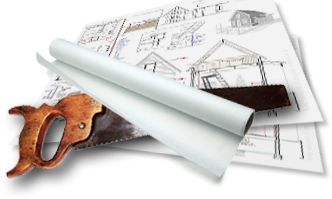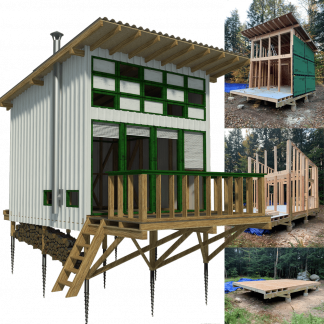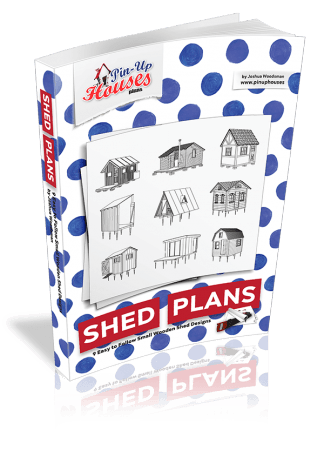Your garage door is more than just an entry and exit point for your vehicles; it’s a crucial component of your home’s security, curb appeal, and overall functionality. Proper garage door repair and installation are essential for ensuring its longevity and smooth operation. Like any mechanical system, your garage door requires regular maintenance to ensure its longevity, smooth operation, and safety. Neglecting maintenance can lead to costly repairs, premature wear and tear, and even safety hazards. This article will provide a comprehensive guide to maintaining your garage door, offering practical tips and insights to help you keep it in top condition for years to come.
Regular Visual Inspections
One of the most effective ways to maintain your garage door is to conduct regular visual inspections. This proactive approach allows you to identify potential issues early on, preventing them from escalating into major problems. Aim to inspect your garage door at least once a month, paying close attention to the following:
Door panels: Look for dents, cracks, or signs of rust or corrosion.
Hardware: Inspect hinges, rollers, tracks, and other hardware for signs of wear, damage, or looseness.
Springs: Check the springs for signs of rust, fraying, or stretching.
Cables: Inspect the cables for fraying, kinking, or signs of wear.
Weatherstripping: Ensure the weatherstripping around the door is intact and sealed properly.
Safety sensors: Verify that the safety sensors are clean and aligned correctly.
If you notice any issues during your inspection, address them promptly to prevent further damage or safety hazards. Noticing these would ensure you are prepared to handle them. For example, if you have welding repairs, you can easily get the gear and equipment you need online at Ridge Products Welding to safely fix them.
Keeping it Clean
Just like your car, your garage door needs regular cleaning to maintain its appearance and protect it from the elements. Wash the door with mild soap and water, using a soft sponge or cloth to avoid scratching the surface. You can also apply a car wax to protect the finish and prevent fading or discoloration.
Debris, such as leaves, dirt, and cobwebs, can accumulate in the tracks and around the door, hindering its operation and potentially causing damage. Regularly remove debris from the tracks and the area around the door to ensure smooth movement.
Lubricating Moving Parts
Proper lubrication is essential for keeping your garage door operating smoothly and quietly. Every few months, take some time to lubricate the various moving parts. Start by applying a lubricant specifically designed for garage door hinges to prevent squeaking and ensure smooth movement. Next, lubricate the rollers with a silicone-based lubricant or white lithium grease to reduce friction as they travel along the tracks. Apply a small amount of lubricant to the tracks themselves, wiping away any excess to prevent buildup. Don’t forget to lightly lubricate the springs with a silicone-based spray to prevent rust and ensure smooth extension and retraction. Finally, lubricate the lock mechanism to keep it operating smoothly and prevent sticking or jamming. Avoid over-lubricating, as this can attract dirt and debris, which can actually contribute to further wear and tear.
Testing the Balance
The springs in your garage door are responsible for counterbalancing its weight, making it easier to open and close. It’s important to test the balance of your door periodically to ensure the springs are functioning correctly.
To test the balance, disconnect the garage door opener and manually lift the door about halfway. If the door stays in place, the springs are properly balanced. If the door falls or rises, the springs need adjustment or replacement. This is where a professional garage door repair company specializing in garage door spring repair, or even garage door cable repair in San Francisco if necessary, can be of assistance.
Inspecting and Replacing Weatherstripping
The weatherstripping around your garage door helps seal out the elements, preventing drafts, moisture, and pests from entering your garage. Inspect the weatherstripping regularly for signs of wear, damage, or deterioration. If the weatherstripping is cracked, brittle, or missing in sections, replace it promptly to maintain a tight seal.
Checking the Safety Features
Modern garage doors are equipped with important safety features designed to prevent accidents and injuries. It’s essential to test these features regularly to ensure they are functioning correctly and provide the intended protection. One of the key safety features is the auto-reverse sensor. To test this, place an object, such as a cardboard box or a roll of paper towels, in the path of the closing door. The door should automatically reverse direction when it senses the obstruction, preventing it from closing completely and potentially causing damage or injury. Another important safety feature is the manual release handle. This handle allows you to disconnect the door from the opener in case of an emergency, such as a power outage or a malfunctioning opener. Test the manual release handle periodically to ensure it’s working properly and that you can easily disconnect the door if needed. If you find that any of the safety features are not working correctly, contact a qualified garage door repair and installation technician to diagnose and fix the issue promptly.
Addressing Minor Issues Promptly
It’s tempting to ignore minor issues with your garage door, especially when they don’t seem to significantly impact its functionality. However, neglecting these seemingly small problems can pave the way for more significant and costly issues down the road. Think of it like neglecting a small cut; if left untreated, it can become infected and lead to more serious health complications. Similarly, a minor issue with your garage door, if left unaddressed, can escalate into a major malfunction requiring extensive repairs or even a complete door replacement.
Professional Maintenance
While regular DIY maintenance is essential, it’s also recommended to have your garage door professionally serviced at least once a year. A qualified technician can perform a more thorough inspection, identify potential issues that might be missed by the untrained eye, and perform preventative maintenance to ensure the longevity and optimal performance of your garage door. When searching for professional help, consider looking for “garage door repair near me” to find local services.
Conclusion
Maintaining your garage door is a crucial aspect of homeownership, ensuring its longevity, smooth operation, and safety. By following the tips and guidelines outlined in this article, you can proactively address potential issues, prevent costly repairs, and enjoy the benefits of a well-maintained garage door for years to come. Remember, regular inspections, cleaning, lubrication, and testing of safety features are essential for keeping your garage door in top condition. Don’t hesitate to seek professional assistance from a qualified garage door repair and installation company for more complex issues or annual maintenance checks. A little preventative care can go a long way in ensuring the longevity and optimal performance of your garage door, providing you with peace of mind and a secure and functional entry to your home.








